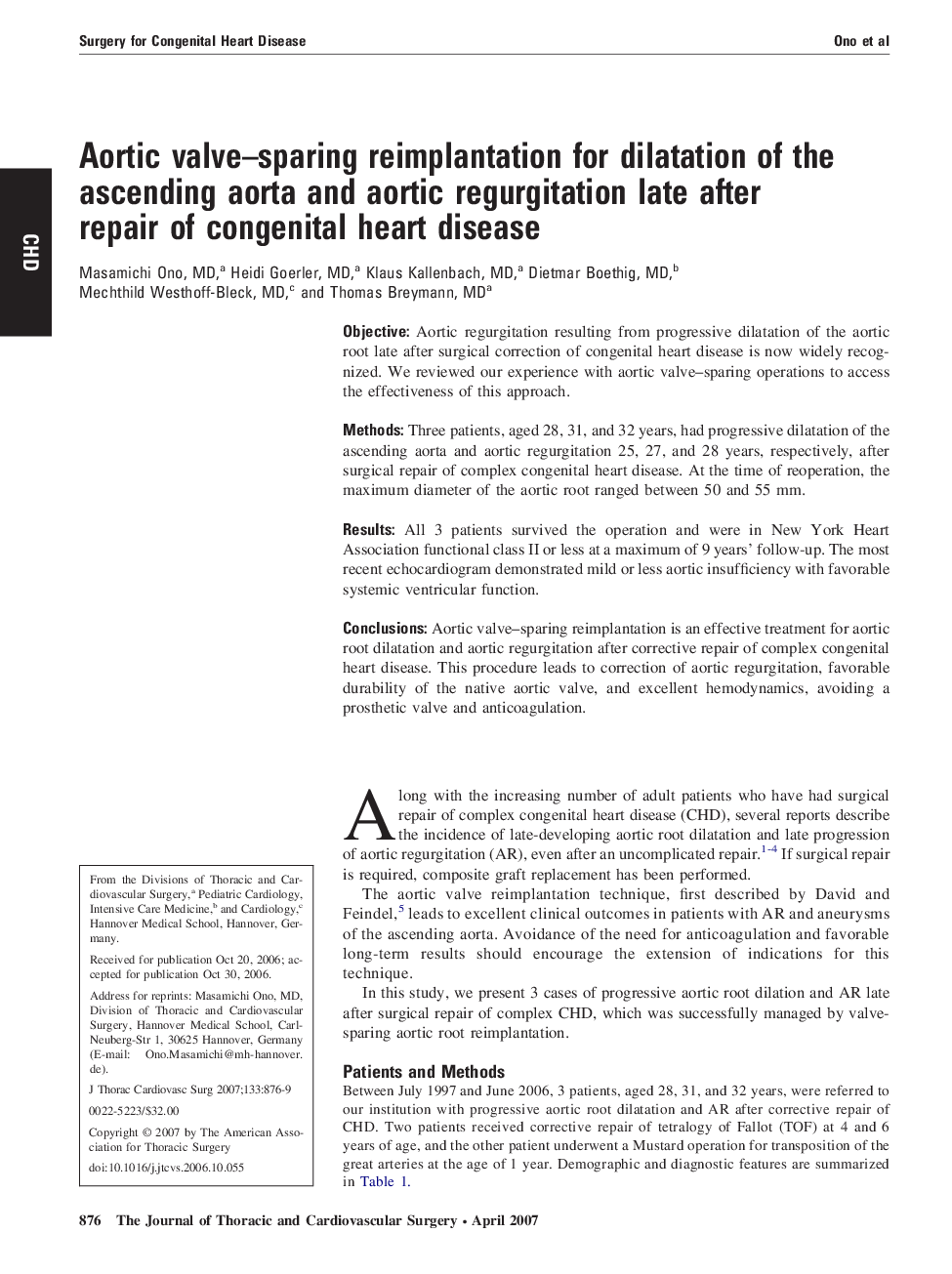| Article ID | Journal | Published Year | Pages | File Type |
|---|---|---|---|---|
| 2986923 | The Journal of Thoracic and Cardiovascular Surgery | 2007 | 4 Pages |
ObjectiveAortic regurgitation resulting from progressive dilatation of the aortic root late after surgical correction of congenital heart disease is now widely recognized. We reviewed our experience with aortic valve–sparing operations to access the effectiveness of this approach.MethodsThree patients, aged 28, 31, and 32 years, had progressive dilatation of the ascending aorta and aortic regurgitation 25, 27, and 28 years, respectively, after surgical repair of complex congenital heart disease. At the time of reoperation, the maximum diameter of the aortic root ranged between 50 and 55 mm.ResultsAll 3 patients survived the operation and were in New York Heart Association functional class II or less at a maximum of 9 years’ follow-up. The most recent echocardiogram demonstrated mild or less aortic insufficiency with favorable systemic ventricular function.ConclusionsAortic valve–sparing reimplantation is an effective treatment for aortic root dilatation and aortic regurgitation after corrective repair of complex congenital heart disease. This procedure leads to correction of aortic regurgitation, favorable durability of the native aortic valve, and excellent hemodynamics, avoiding a prosthetic valve and anticoagulation.
